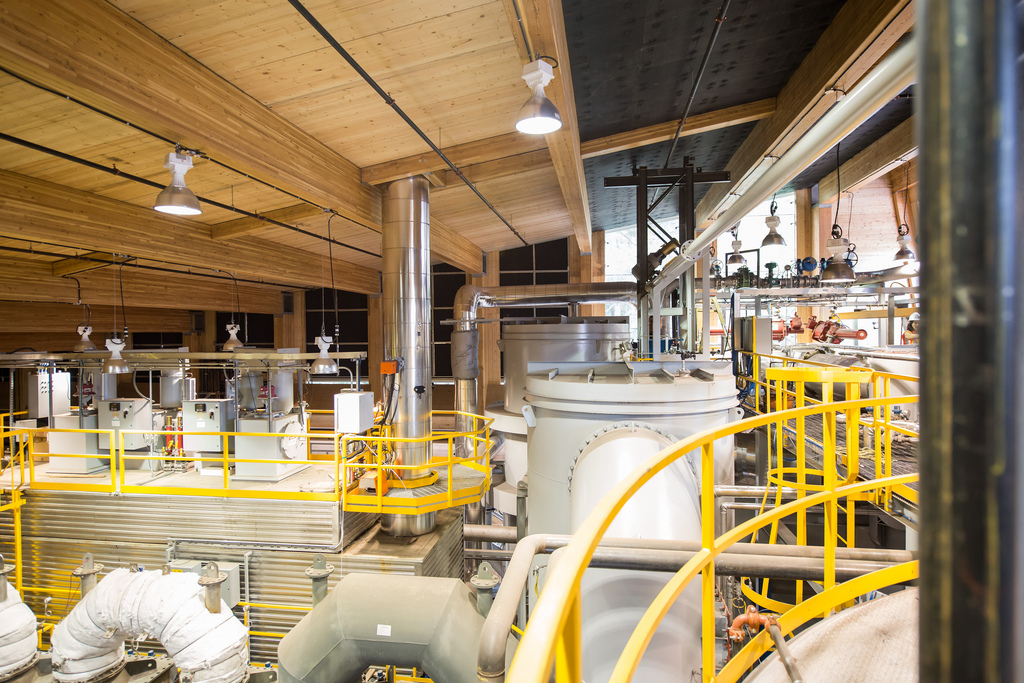Advanced Biomass Gasification for Heat and Power Demonstration Project
Lead proponent: University of British Columbia
Location: UBC Point Grey Campus, Vancouver, British Columbia
CEF contribution: $ 10.8 M
Project total: $ 28 M
Project Background:
The University of British Columbia (UBC) is one of the most sustainable post-secondary campuses in the world, earning top grade in the Sustainable Endowments Institute’s College Sustainability Report Card. In February 2010, UBC and its partners Vancouver-based Nexterra Systems and GE Water & Power launched the “Advanced Biomass Gasification for Heat and Power Demonstration Project”. The Project was awarded $10.8M from the Clean Energy Fund and would further underscore the university’s leadership in sustainability by reducing emissions from its largest emitter - the natural-gas fueled boiler facility. Moreover, in the month following, UBC committed to new aggressive GHG emissions targets. The university had already met international targets established by the United Nations Framework Convention on Climate Change. The new targets would see UBC reducing GHG emissions an additional 33% from 2007 levels by 2015, and eliminating 100% of GHGs by 2050.

The Bioenergy Research and Demonstration Project is a unique demonstration of Nexterra’s gasification and syn-gas conditioning technologies
The Project would result in the construction and commissioning of a BioEnergy Research and Demonstration Facility (BRDF) at the university’s Point Gray campus in Vancouver. For several years, Nexterra had been working with GE Water & Power to develop a new generation of biomass fueled combined heat and power systems (CHPs). The systems would utilize a GE Jenbacher reciprocating engine fueled by conditioned syngas generated by a Nexterra gasification system. Both Nexterra and GE were eager to undertake a “city scale” demonstration of their combined system. Partnership with UBC brought the desires of Nexterra and GE together with the needs of UBC to solidify the Project.
Results:
The BRDF was initially designed to operate in one of two modes – thermal or CHP. In thermal mode, the facility produced only heat energy in the form of steam. In CHP mode, the facility produced both electrical and thermal energy. A year into the Project, the scope was expanded to include enhanced heat recovery of planned-vented heat, as well as the installation of an advance electro chemical energy storage system and an energy management system to provide emergency backup power in the event of a main electrical supply grid failure. Lithium-ion based energy storage “nodes” were installed at three locations on campus to provide a combined total of 1 MWh installed capacity.
Although operation in thermal mode exceeded the pro forma, the facility was not able to meet the target for CHP operation. The CHP equipment was commissioned and synthesis gas production trials commenced in July 2012. But in June 2013, a high temperature alarm on the syngas cooler and required the syngas conditioning system to be taken offline. Mechanical failure of the syngas conditioning system precluded the generation of engine-quality syngas.
The Project was then further expanded to introduce dual-fuel capability to the BRDF, in part due to the desire to designate the facility as a “firm” supplier of heat and power to the campus, and therefore fuel redundancy. But also because of the availability of renewable natural gas through FORTIS BC.
With implementation of the original technology and the various add-ons, the facility realized an availability of 84% and generated approximately 42,000 GJ of steam, 4.1 GWh of electricity and 674 MWh of hot water between January 1 and March 31, 2015.
Benefits to Canada:
When first put into operation, the facility displaced approximately 6,679 tonnes of emitted fossil fuel based CO2 annually and is on track to displace over 9,000 tonnes annually by 2017, which benefits all of Canada.
Next Steps:
Incremental improvements will be made to the BRDF to enhance its performance. Rectifying the mechanical failure of the syngas conditioning remains an outstanding issue, in part due to the price and availability of renewable natural gas.
Page details
- Date modified: